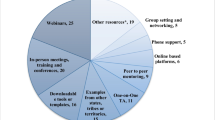Abstract
Through the National Cancer Act and its amendments (National Cancer Act, 1971; National Cancer Act Amendments, 1974), the U.S. Congress mandated that the National Cancer Institute (NCI)—the nation’s lead agency for cancer information and research—provides accurate, up-to-date information about cancer to all segment of the U.S. population. In 1975, the NCI established the Cancer Information Service (CIS), a premieer resource for providing cancer information and education to the nation. The CIS is designed to maximize reach to the public by responding to the cancer needs of clients through several communication technologies, including a telephone service, e-mail, and real-time instant messaging. By offering cancer information to the public through one-on-one interactions with CIS information specialists, the CIS is in a unique position to fill the gap that lies between the preferred, interpersonal source of the health care provider and the actual, impersonal Internet. Cancer Information Service can play an important role in providing health care practitioners, health departments, caregivers, and researchers with up-to-date and accurate information about cancer and clinical trials. Currently, 10% of CIS callers are health professionals. Referring patients to the CIS can augment health practitioners’ ability to convey important health information to patients. The CIS program uses NCI resources to educate clients on cancer prevention, early detection, treatment, and rehabilitation and smoking cessation in simple terms that they can understand. Additionally, the CIS works with organizations to develop educational programs and interventions to reach underserved populations. A unique component of this information and education program is its ability to contribute to the field of health communications research by collaborating in research studies throughout the U.S. Finally, since its inception in 1975, the CIS has assisted international organizations with starting a cancer information service and as such is seen as a “stem cell” from which many international CIS programs have derived.
Similar content being viewed by others
References
Squiers L. Bridging the critical chasm between service and research: The Cancer Information Service’s collaboratory. J Cancer Educ. 2007;22(suppl.):S49-S55.
Cancer Trends Progress Report — 2005 Update. National Cancer Institute, NIH, DHHS, Bethesda, MD, December 2005. National Trends Progress Report — Update, National Cancer Institute, NIH, DHHS, Bethesda, MD. December 2005; http://progressreport. cancer.gov.Last accessed: April 30, 2007.
Morra ME, Bettinghaus EP, Marcus AC, et al. The first 15 years: What has been learned about the Cancer Information Service and the implications for the future? J Natl Cancer Inst Monogr. 1993;14:177–186.
Morra M, Thomsen C, Vezina A, et al. International Cancer Information Service: A worldwide resource. J Cancer Educ 2007;22(suppl):S61-S69.
La Porta M, Hagood H, Kornfeld J, et al. Partnership as a means for reaching special populations: Evaluating the Cancer Information Service partnership program. J Cancer Educ 2007;22(suppl):S35-S40.
Perrochia R, Galassi A, Jacobs R, et al. The Cancer Information Service staff training program: A foundation for excellence. J Cancer Educ 2007;22(suppl):S8-S17.
Fleisher I, Kornfeld J, Davis S, et al. The NCl’s Cancer Information Service’s research continuum framework: Integrating research into cancer education practice (1999–2004). J Cancer Educ 2007;22(suppl):S41-S48.
Marcus AC, Morra ME, Bright MA, et al. The CIS model for collaborative research in health communications: A brief retrospective from the current generation of research. J Health Comm. 2005;10(suppl 1):235–245.
Marcus AC, Woodworth MA, Strickland CJ. The CIS as a laboratory for research. J Natl Cancer Inst Monogr. 1993;14:67–80.
Morra ME (ed): The impact and value of the Cancer Information Service: A model for health communication. J Health Comm. 1998;3(suppl):1–109.
Marcu AC, Morra ME, Bettinghaus E, et al. The Cancer Information Service research consortium: An emerging laboratory for cancer research. Prev Med 1998;27:S3-S15.
Bright MA, (ed). The National Cancer Institute’s Cancer Information Service: A new generation of service and research to the nation. J Health Comm. 2005;10(suppl 1):1–205.
Squiers L. Bridging the critical chasm between service and research: the Cancer Information Service’s collaboratory. J Cancer Educ 2007;22(suppl):S49-S55.
Fox S. Online health search 2006: Most internet users start at a search engine when looking for health information online. Very few check the source and date of the information they find. Pew internet and American Life project; 2006.
Bass SB, Ruzek SB, Gordon TF, et al. Relationship of internet health information use with patient behaivor and self-efficacy: Experiences of newly diagnosed cancer patients who contact the National Cancer Institute’s Cancer Information Service. J Health Comm. 2006;11:219–236.
Murray E, Lo B, Pollack L, et al. The impact of health information on the internet and the physician-patient relationship: patient perceptions. Arch Intern Med: 163:1727–1734.
Matthews BA, Baker F, Spillers RL. Oncology professionals and patient requests for cancer support services. Support Care Cancer 2004;12:731–738.
Hesse BW, Moser RP, Finney Rutten LJ, et al. The Health Information National Trends Survey: Research from the baselin. J Health Comm. 2006;11(suppl):vii-xvi.
Squiers L, Bright MA, Finney Rutten LJ, et al. Awarenes of the National Cancer Institute’s Cancer Information Service; Results from the health information nation al trends survey (HINTS). J Health Comm. 2006;11:117–133.
Fact sheet — Comprehensive cancer control: collaborating to conquer cancer. Washington, DC: Centers for Disease Control and Prevention; 2004/2005.
Keller, PA, Bailey LA, Koss KJ, et al. Organizing, financing, promotion, and cost of U.S. quitlines, 2004. Am J Prev Med. 2007;1:32–37.
Author information
Authors and Affiliations
Corresponding author
Rights and permissions
About this article
Cite this article
Bright, M.A. The National Cancer Institute’s Cancer Information Service: A premiere cancer information and education resource for the nation. J Canc Educ 22 (Suppl 2), S2–S7 (2007). https://doi.org/10.1007/BF03174340
Issue Date:
DOI: https://doi.org/10.1007/BF03174340




